Biolblitz at Llanbwchllyn Lake
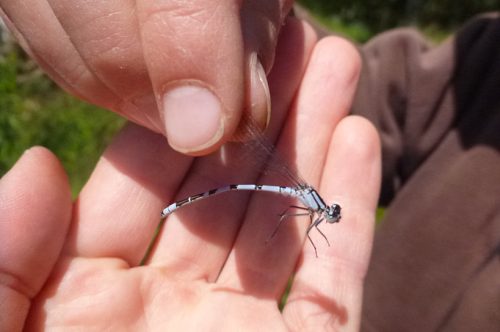
As a natural history illustrator, it’s inevitable that I’m passionate about wildlife. Wildlife close to home is especially appealing, so when my local Wildlife Trust, RWT offered a “Focus on Nature Bioblitz at Llanbwychllyn Lake” I had to go along. I love the wildlife trusts, and this is a perfect example of why.
What is a bioblitz?
“Bioblitz” is a relatively new term, and means that experts and amateurs go to one site and look all over it, listing every single species of plant and animal they see. It’s not only a good way of getting a snapshot of the wildlife communities in a place, but is also very exciting for visitors.
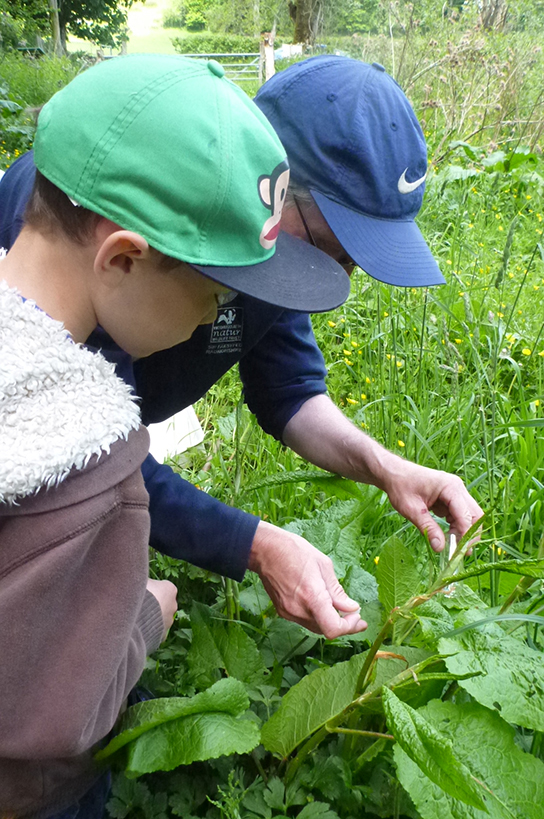
Phil Ward teaching my son how to trap an insect into a specimen jar so it can be examined without escaping.
Starting out on the bioblitz
We met Emma Morgan and followed her to a glorious meadow, peppered with marsh orchids and mare’s tail, buttercups and rushes. Later, we found lots of the stunning Swollen Thigh beetle (also known as the False Oil Beetle or Thick-Legged Flower Beetle) Oedemara nobilis glinting in the buttercups, metallic green.
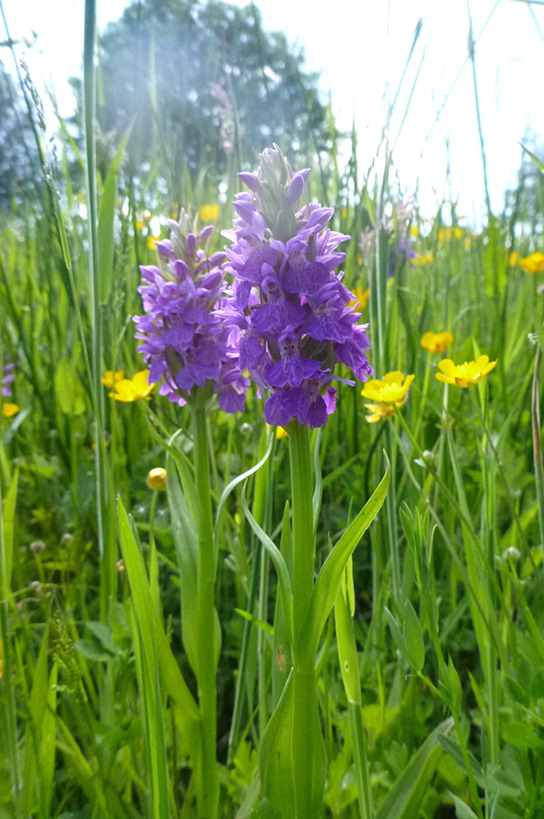
Marsh orchids at Llanbwchllyn Lake meadow
Ray Wood, RWT’s expert botanist came for the second half of the day, so we had to limit ourselves to the non-species specific “Marsh orchid” until he arrived for a more concrete i.d. as there are many different and indistinct species of this flower, and they hybridise freely.
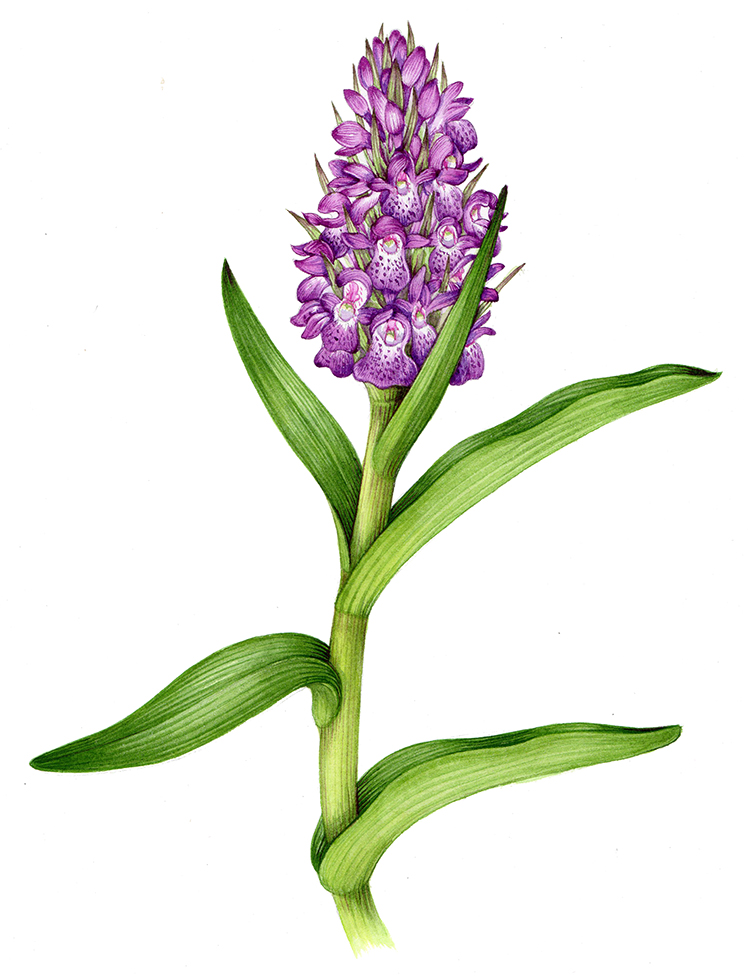
Southern Marsh orchid Dactylorhiza praetermissa (those at Llanbwchllyn are more likely to be the Northern Marsh Orchid Dactylorhiza purpurella)
Bioblitz pond dipping
Phil Ward, resident RWT expert entomologist and general all round star, was on site pond dipping. He showed us caddis fly, water beetle larva, flatworms, and damsel fly larvae. My two children (8 and 5) were hooked.

Pond dipping
Telling damselfly species apart
Phil showed us how to use sweep nets and how to hold a damselfly for long enough to get a definite identification on it, but do it no damage.
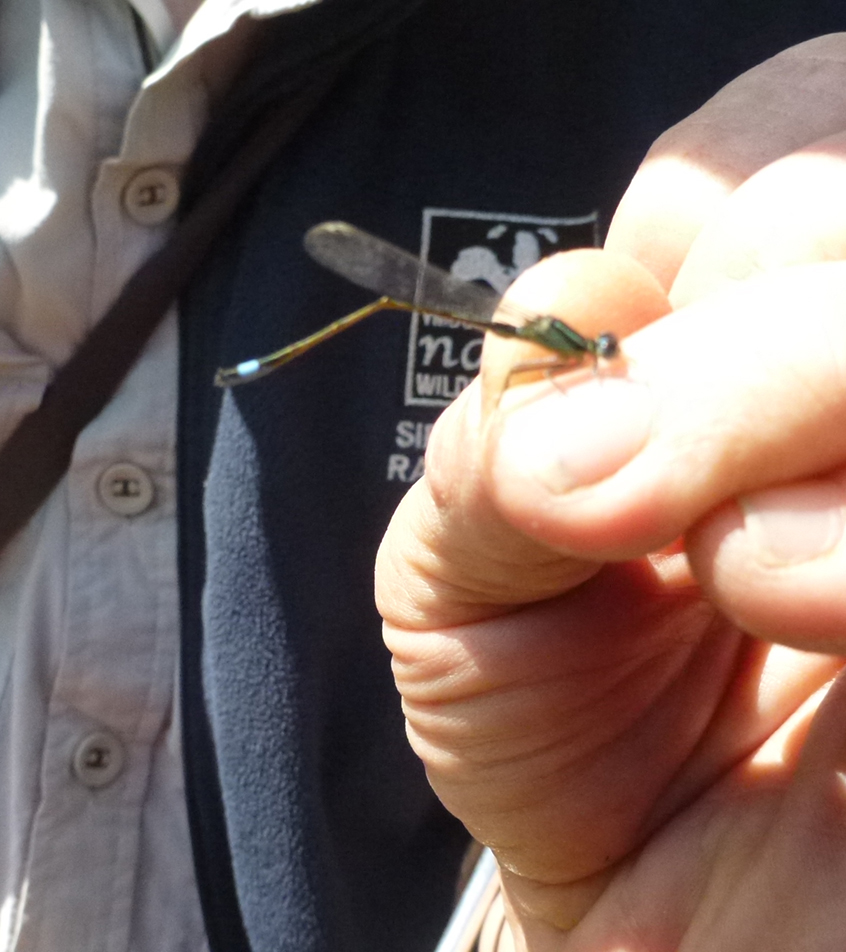
Photo of Phil holding a (blurry) Common blue tail damselfly.
The common blue damselfly and azure damselfly are very similar, and for years I’ve struggled to tell them apart. No longer. Phil explained the common blue has a spot on its second abdominal segment whereas the Azure damselfly has a thin “u” marking. “you can remember because azure has a “u” in it”, he explained.
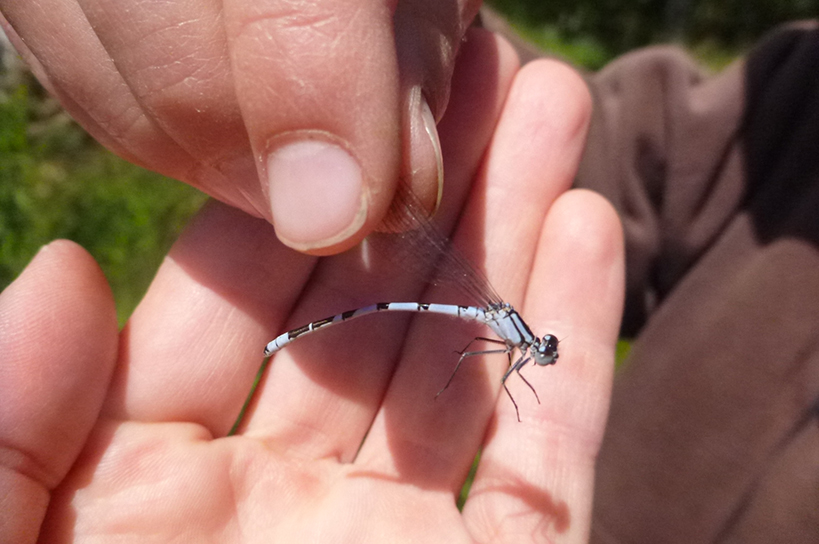
Phil presenting my son with a Common blue damselfly
For more on damselflies, check out my blog.
Beetles on the bioblitz
Phil told us that sweep-netting trees was worth doing, and that the oak will yield the highest variety of insect species (up to 670)! Willow is next, with 300 – 400 known species of insect found on these plants. A couple of swipes later and we’d netted some amazing animals.
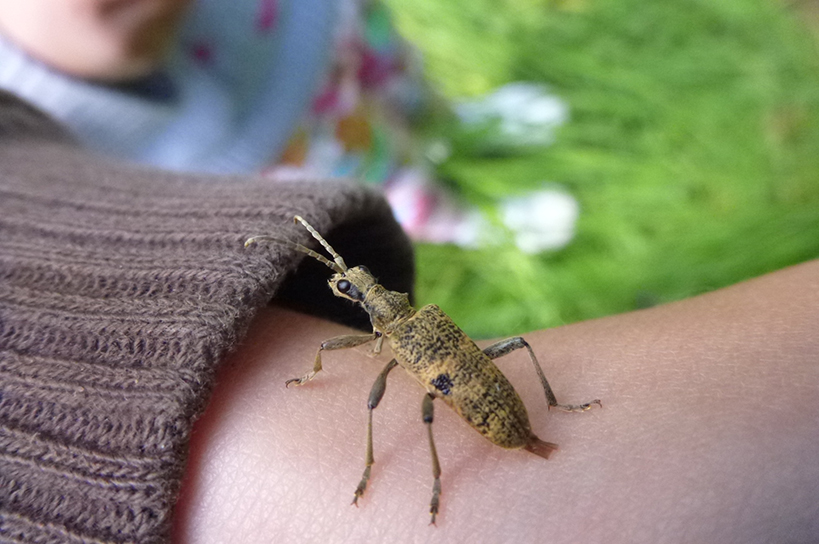
The long horn beetle Rhagium mordax lives on rotten wood
We thought the longhorn beetle Rhagium mordax was pretty exciting (not least because of its absurd common name, “blackspotted pliers support beetle”). However, the thrill on finding a pair of wasp beetles Clytus arietis was enormous.
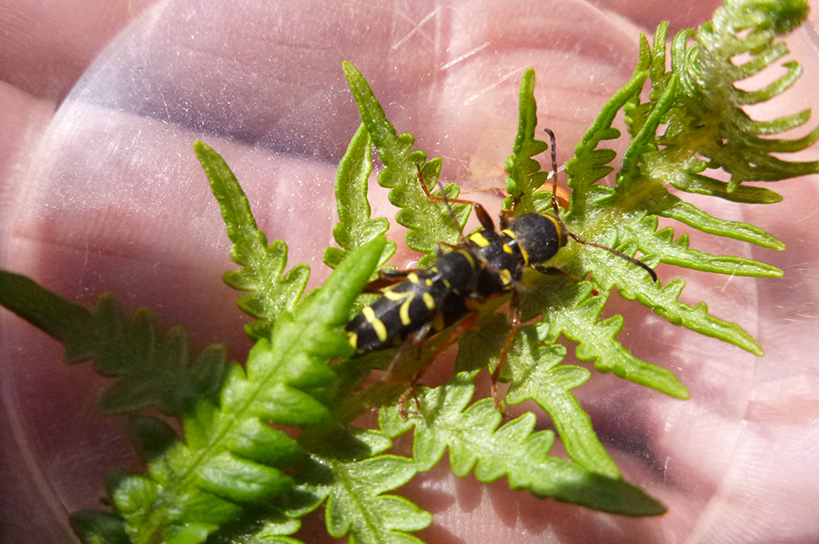
They were amazingly beautiful, and totally unaware of us. The dimorphism between sexes was striking.

Illustration of the Common wasp beetle Clytus arietis (colour rough)
More bioblitz insects
Walking back to have lunch we spotted the Large Red damselfly Pyrrhosoma nymphula andseveral tree spiders. The Green Nettle Weevil Phyllobius pomaceus was new to me. We saw Yellow Dung Fly Scathophaga stercoraria. My children were sweeping as if their lives depended on it, it was great to see them so excited by nature.
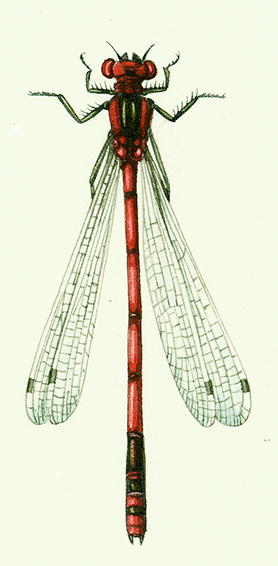
Large Red damselfly Pyrrhosoma nymphula
Megan Shersby of A Focus on Nature (a network for young conservationists aged between 15 and 30) was on site to help and inspire visitors, and showed us her emperor moth caterpillars as we had a picnic lunch in the sun. Pete and Ginny Clarke (the county moth recorders) stopped by and let my kids hold a Privet Hawk Moth they’d just found.
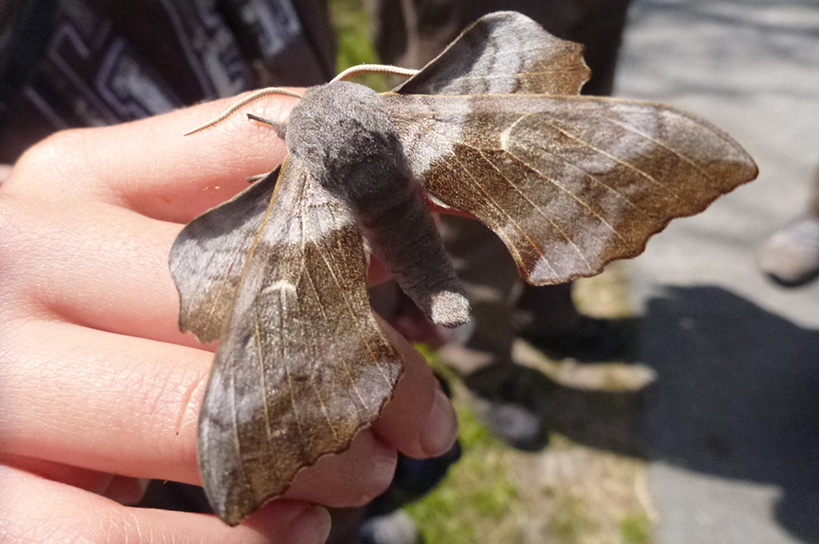
Privet Hawk Moth Sphinx ligustri
Looking at Buttercups
After lunch, we looked at the Creeping Buttercup Ranunculus repens with Ray Woods, RWT’s botanist and lichen expert.
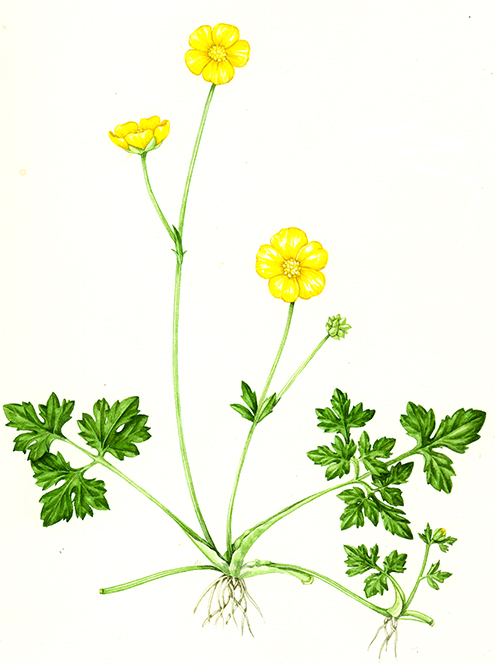
Creeping Buttercup Ranunculus repens
This plant is common, and normally has five petals. Ray told us that recent research suggests that when the flowers have more numerous petals it suggests that the area has been grazed for many hundreds of years. We found several with seven petals, one bearing eight.
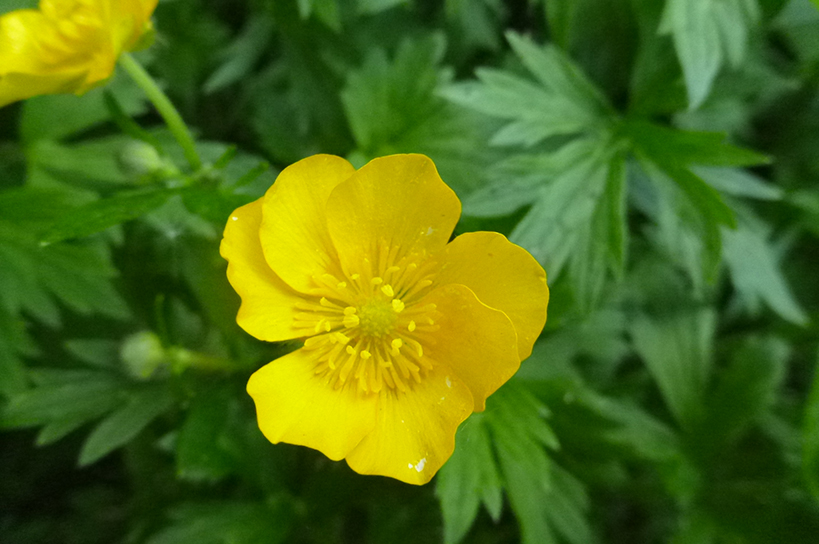
Creeping Buttercup Ranunculus repens flower bearing seven petals, not the usual five.
We wondered why you sometimes find buttercups which are white or bleached in part. There was no definitive answer, but Ray suggested it could relate to the starch cells on the petals. These reflect light back, like cats’ eyes, and make the flower very glossy. Perhaps the colour “chips off”?
We encountered a dead giant cranefly Tipula maxima (the largest UK species), learned that the Bloody Nosed Beetle Timarcha tenebricosa feeds on bedstraws, saw St. Marks Fly Bibio marci, the Common Nettle-tap moth Anthophila fabriciana (so called cause it lives in nettles and you find it when you tap the plant…) and a Garden Chafer Rhizotrogus majalis.
Biolblitz: A fabulous day ou

We did a bit more sweep netting down by the lake. The differing growth patterns of the marestail Equisetum and the sweet reed grass Glyceria maxima proved interesting. Then we headed for home.
To say we had a brilliant day out is an understatement; these bilblitz events are simply thrilling for adults and children alike. In fact, the first thing I did when I got in was to place a massive order for sweep nets, butterfly nets, specimen bottles and a pooter with Watkins & Doncaster. Here’s hoping the seeds of a passion sown by RWT will continue to give my kids a joy for nature that lasts a lifetime.

